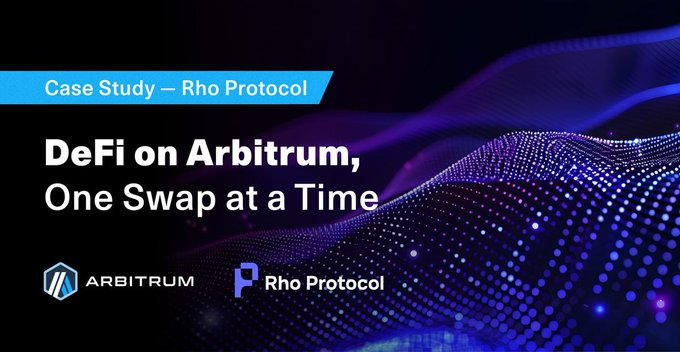The next stop for DeFi: @Arbitrum is becoming a testing ground for "institutional-grade play."
To be honest, many people still perceive Layer 2 as just a "cheap version of Ethereum," thinking of it merely as a transitional solution for speeding up and reducing costs.
However, if you take a closer look at the projects emerging on @Arbitrum, you'll notice an interesting phenomenon: some "atypical DeFi" concepts are sprouting here—like Tender, which we just discussed a few days ago, focusing on institutional-level RWA liquidation, and today I discovered a protocol called @ionprotocol that directly brings the "repo market" from traditional finance onto the blockchain.
Ion's model is actually quite "old money": it involves collateralized lending of on-chain government bonds, but with a repurchase agreement (Repo) twist. Simply put, you can collateralize your U.S. Treasury bond certificates (like Ondo's OUSG) with Ion to borrow stablecoins, while agreeing to buy back the bonds at a fixed interest rate at a future date. This type of "time-bound collateralized lending" is a trillion-dollar market in TradFi, where banks and hedge funds engage daily, but hardly anyone touches it in DeFi—because it's too "uncrypto."
However, Ion's data is quite interesting: in just 3 months since launch, its TVL surged to $200 million, with daily repo trading volume exceeding $10 million. What does this indicate? The Arbitrum ecosystem is starting to attract "non-meme funds." Institutional players who find Ethereum mainnet too expensive and Solana too "retail" are treating this as a testing ground.
Even more intriguing is Ion's expansion route: they have integrated Chainlink's CCIP, directly cross-chain enabling the repo market. For instance, you can collateralize government bonds on Arbitrum to borrow USDC, then use CCIP to transfer funds to the Base chain for a new project, with automatic liquidation and repayment upon maturity. This combination of "traditional financial tools + cross-chain leverage" is tailor-made for hedge funds.
Why Arbitrum? Three words: ecological niche vacuum. Ethereum mainnet is too expensive, Solana is too much of a casino, while Arbitrum has enough institutional-grade infrastructure (like Gelato's automation and Chainlink's oracles) and a stronger DeFi-native community than Polygon. Just look at the recent projects emerging—Tender, Rho, Ion—all filling the "complex financial needs" gap.
Perhaps the narrative for the next cycle is no longer about "which chain's meme is crazier," but rather "which chain can first chew through the bones of TradFi." At least for now, it seems Arbitrum has positioned itself well for a strong start.
Show original
33.47K
51
The content on this page is provided by third parties. Unless otherwise stated, OKX is not the author of the cited article(s) and does not claim any copyright in the materials. The content is provided for informational purposes only and does not represent the views of OKX. It is not intended to be an endorsement of any kind and should not be considered investment advice or a solicitation to buy or sell digital assets. To the extent generative AI is utilized to provide summaries or other information, such AI generated content may be inaccurate or inconsistent. Please read the linked article for more details and information. OKX is not responsible for content hosted on third party sites. Digital asset holdings, including stablecoins and NFTs, involve a high degree of risk and can fluctuate greatly. You should carefully consider whether trading or holding digital assets is suitable for you in light of your financial condition.

